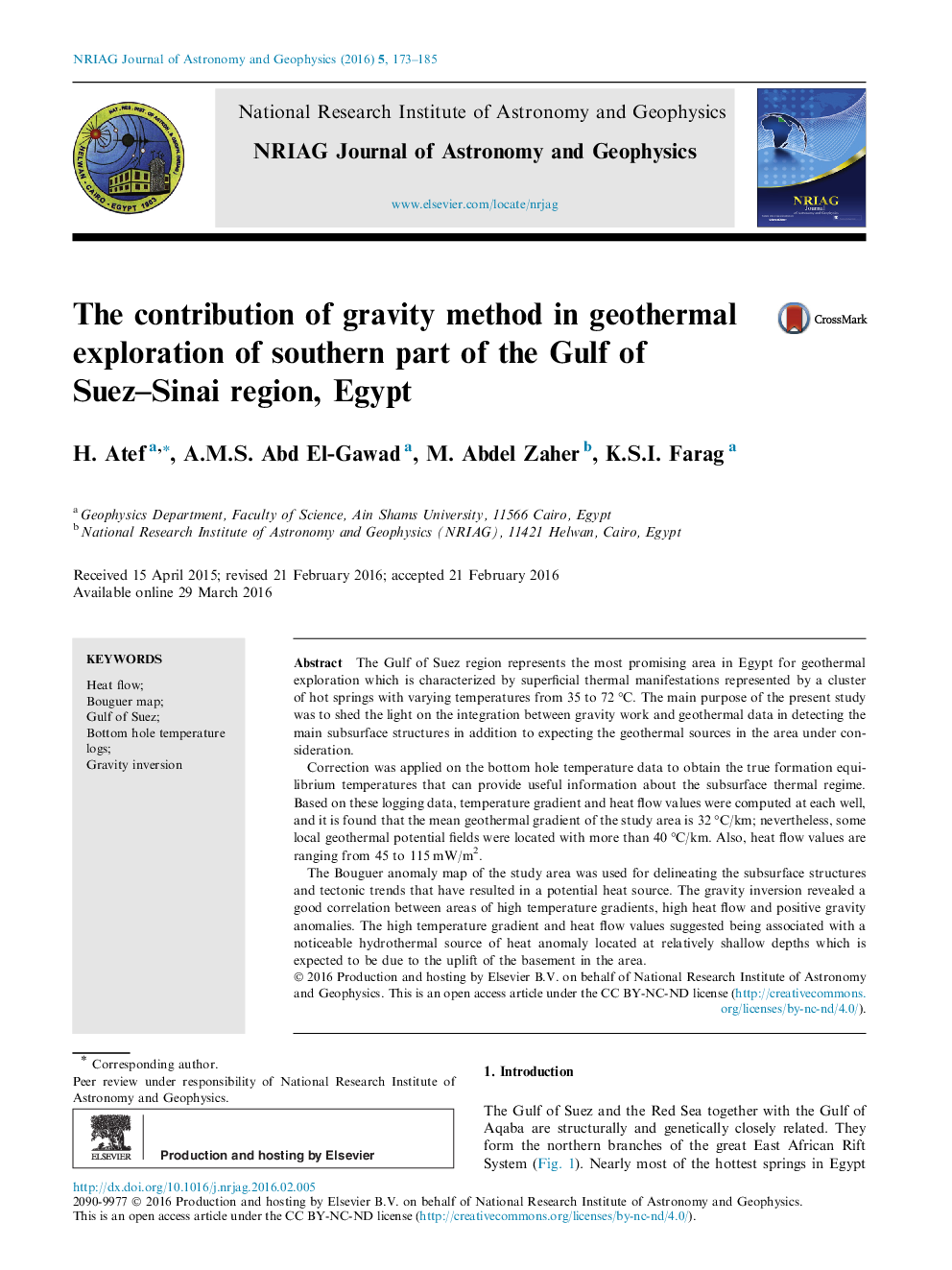| Article ID | Journal | Published Year | Pages | File Type |
|---|---|---|---|---|
| 1780564 | NRIAG Journal of Astronomy and Geophysics | 2016 | 13 Pages |
The Gulf of Suez region represents the most promising area in Egypt for geothermal exploration which is characterized by superficial thermal manifestations represented by a cluster of hot springs with varying temperatures from 35 to 72 °C. The main purpose of the present study was to shed the light on the integration between gravity work and geothermal data in detecting the main subsurface structures in addition to expecting the geothermal sources in the area under consideration.Correction was applied on the bottom hole temperature data to obtain the true formation equilibrium temperatures that can provide useful information about the subsurface thermal regime. Based on these logging data, temperature gradient and heat flow values were computed at each well, and it is found that the mean geothermal gradient of the study area is 32 °C/km; nevertheless, some local geothermal potential fields were located with more than 40 °C/km. Also, heat flow values are ranging from 45 to 115 mW/m2.The Bouguer anomaly map of the study area was used for delineating the subsurface structures and tectonic trends that have resulted in a potential heat source. The gravity inversion revealed a good correlation between areas of high temperature gradients, high heat flow and positive gravity anomalies. The high temperature gradient and heat flow values suggested being associated with a noticeable hydrothermal source of heat anomaly located at relatively shallow depths which is expected to be due to the uplift of the basement in the area.
